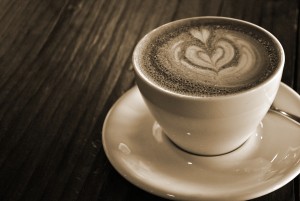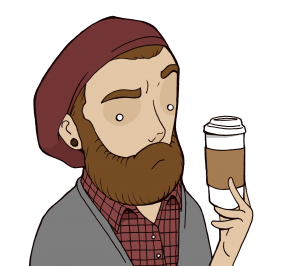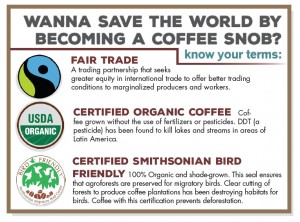
It’s been said America runs on coffee. Today 34 percent of Americans drink a cup of coffee every morning. And a greater percentage of younger adults use caffeine to “enhance” their ability to study for exams and complete assignments before deadlines.
I write this just after having my morning cup of coffee, feeling instantly more focused and alert. I can thank my Eastern European wife for my coffee addiction. My favorite style is “Turkish” coffee, where the coffee resembles a thick soup and is slowly sipped. Maybe it’s in my DNA. My Armenian ancestors likely enjoyed a cup of coffee as a rare luxury. But today coffee is ubiquitous. This is our first coffee issue. I found this subject fitting because like beer, coffee offers such a variety of styles, roasts and traditions. The traditions and snobbery surrounding coffee, like beer, seems to be making our world a better place.
I never drank coffee before the age of 20 and I was raised to consider coffee, like beer, as “bad.” But as with beer, the truth has prevailed over fiction: and to bear my testimony in my own words of wisdom, I now believe coffee is good.
Utah’s Roasters
“Coffee is the third most valuable traded commodity, behind arms and oil.” says Caffe Ibis Coffee Roasting Company founder Sally Sears. With massive amounts of coffee required to sustain the western world, it is largely third-world countries in South America and Southeast Asia who provide this valuable commodity. This has produced an interesting economic partnership between the first-world drinkers and the third-world growers.
The growth of “specialty coffee” and specialty coffee shops are now causing significant changes to the third-world growers. The specialty movement has been great for the most impoverished third-world farmers who typically earn just a few dollars a day, because it is slowly detaching them from ebbs and flows of the commodity driven market, making their livelihood less dependent upon futures markets and Wall Street investors. Today specialty coffees have 30% market share of all coffee sold worldwide.
Even more recently a new emerging trend has developed where coffee roasters and shops partner directly with growers and farmers producing “direct trade” coffee. Growers in their countries of origin earn fair wages for their labor and crops while coffee buyers help manage quality control and production consistency. The transition of coffee from a commodity to a specialty item was largely pioneered by coffee roasters from the Northwestern US.
Coffee was huge in San Francisco and New York in the 1960s. In San Francisco they brought over the artisan roasting from Italy. Yemen is where the birth of coffee started. “We joked for years that Seattle was a San Francisco wannabe,” said Sears.
In the late 1980s a number of coffee shops around Seattle emerged which wanted to offer a better cup of coffee than what was being offered in diners and cafes at the time.
The concepts of “fair trade“, “single source” and “small batch roasting” for coffee in the United States emerged from the SCAA (Specialty Coffee Association of America) organization. These innovations all benefited family farms and shade-grown Arabica beans rather than coffee plantations and clear-cutting of rainforests. This movement was initiated by an anti-WTO protest, where people went on strike to demand fairness for the farmers.
In researching this topic, we have found that the coffee consumers are especially conscious of how their choices affect the greater planet. Further, if everyone cared as much about the other food items they purchase as they do coffee, our world would be a much better place, especially for farmers and the ecosystems in which they operate.
In this issue we thought it fitting to celebrate the best of the best, not coffee shops, but the roasters and the companies who are buying raw coffee beans. Those who have a true passion for roasting coffee are a unique breed. They live for the aromas of the oils of various beans. They listen for the first crack, for a “city roast” or a second crack of a perfect Colombian roast. They nerd out on the various flavors different types of coffee beans can produce from various origins. It’s the folks behind the scenes rotating the massive drums of roasted beans, who we profile in this special issue on “The Roasters.”









